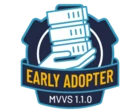As Rocket's MV evangelist, I'm starting a discussion. What are you thinking or doing with AI around your MV app?
------------------------------
Mike Rajkowski
MultiValue Product Evangelist
Rocket Internal - All Brands
US
------------------------------








